Spain is internationally known for the quality of its diverse wines, ranging from reds, whites and rosés to the famous cava (sparkling wine). The options are quite endless and the quality is undeniable! Each region benefits from specific characteristics that make the wine unique. The different climate of the Spanish peninsula and the quality of the soils in the different parts of the country allow the grapes to produce different wines. There are many wine regions in Spain, but, in this article, we have compiled the best ones so that you can enjoy the most exquisite wines on your trip and explore the remarkable wine landscapes while hopping from vineyard to vineyard, which will most definitely dazzle you at first sight!
Rioja
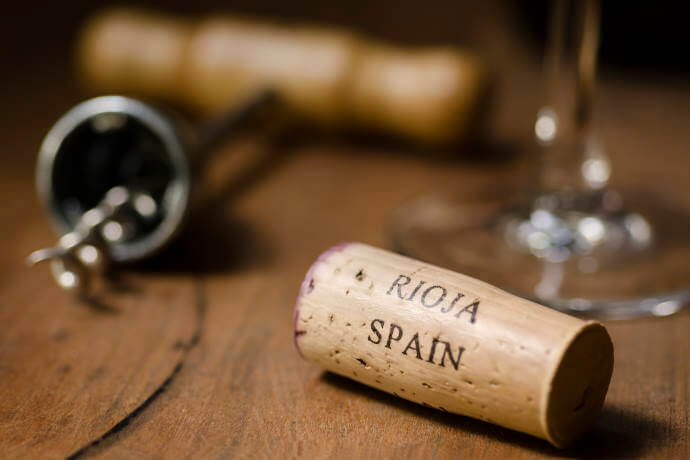
As well as being the most acclaimed and prestigious demarcated wine region in Spain, Rioja is also internationally renowned. The wines produced in this northern Spanish region are highly rated by most wine connoisseurs, and even those who know less about wine can recognize the high quality. Tempranillo is the main grape variety and forms the essence of the best Rioja wines, although it can also be blended with Garnacha, Graciano and Carignan. Did you know that this was the first region in Spain to obtain the status of DO (Denomination of Origin)? It is also one of the only two Spanish regions classified as DOCa (Denominación de Origen Calificada, meaning Qualified Denomination of Origin). If you explore this area, you will find hundreds of emblematic wineries and bodegas scattered throughout the different towns. There you can learn about the winemaking process and the best brands, and discover vast vineyards where nature stands out for its unique beauty. In these wineries you can have interesting experiences and taste different unique wines, traditional or more modern, while expanding your knowledge of the wines and the region. This demarcated area is divided into three zones: Rioja Alta, located on the western edge of the region at the highest altitude; Rioja Alavesa, on the northern bank of the Ebro River; and Rioja Baja, a rather dry and warm area strongly influenced by the Mediterranean climate. Logroño, the capital of Rioja, is a charming, winding town that you should most definitely visit while exploring this region. There are plenty of lovely churches to visit, vibrant squares where you can relax and have a glass of wine and bodegas to explore. Laguardia, close to Logroño, is also a picturesque town known for the many cellars and underground tunnels it hides in its corners. Haro, a real magnet for wine lovers, where you will find several ancient bodegas, is also a very interesting town worth visiting. And if you want to learn even more about the world of wine, there are also several wine museums scattered throughout Rioja, such as the Vivanco Museum of Wine Culture.
Priorat
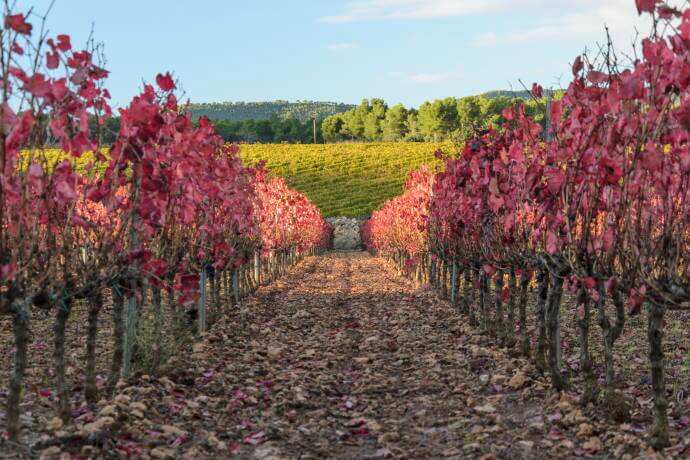
If Rioja is one of the most famous regions in Spain because it produces excellent wines, Priorat is equally deserving of merit. This small, rural and remote region in Catalonia, near Tarragona, is the other Spanish area designated as DOCa (the highest possible wine classification in Spain), so it is quite obvious that the wines produced here are of the highest quality. Priorat is best known for its full-bodied red wines with intense flavor and good acidity, although other types of wine are also produced here in smaller quantities. Priorat wines are made from indigenous grapes grown in the region's infertile soils. The slate soils (named llicorella) give the wines their minerality. In the beautiful terraced vineyards and along the rugged landscapes grow the most famous grape varieties of Priorat, Garnacha and Carinena. There are about 100 wineries in this region! However, there is more to do in Priorat than sit back and drink fabulous wine (although that sounds like a perfect vacation plan!). You can visit national monuments like the Carthusian monastery of Escaladei (the Carthusian monks founded their monastery and introduced the art of winemaking to the region), go on an olive oil route (another specialty of the region) or a bar crawl, visit the beautiful Mirador de Siurana, a small village in Priorat, or simply indulge in delicious gastronomy. The truth is: Priorat is a true paradise for nature and wine lovers.
Ribera del Duero
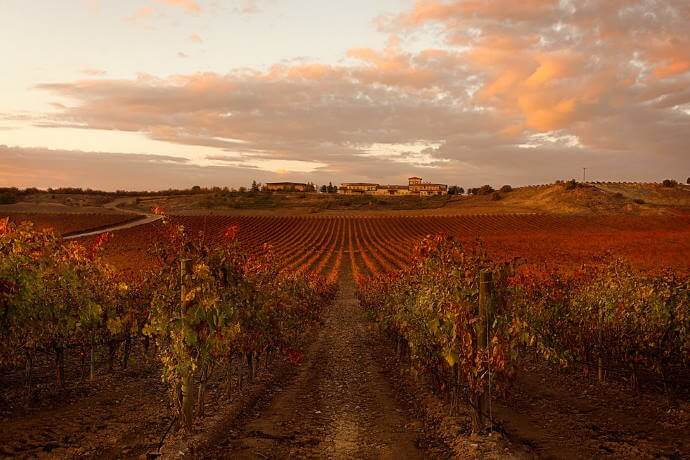
The wines of Ribera del Duero, a wine region situated along the banks of the Duero River, just a two-hour drive from Madrid, have already received international recognition and rightly so. Tinta del País (a clone of Tempranillo) is the grape variety most commonly used to make these unique wines. The wines are pigmented, with dark fruit aromas - their distinctive characteristics are largely due to the climate, soils and growing conditions of the region. Ribera del Duero, undoubtedly one of Spain's most prestigious wine regions, is more focused on the production of red wines (although good rosés are also produced here) and is home to several renowned wineries. Aranda del Duero, the historic capital of the region with its ancient underground wine cellars, is a must-see for any visitor to Ribeira del Duero. Peñafiel is also a very picturesque town with much to see, such as the castle and the medieval square. Also, exploring the beautiful Duero River, which gave its name to the region, is always a good plan, as well as discovering the beautiful neighboring towns like Burgos or Segovia. In this amazing region, which has obtained the status of Denominación de Origen (DO), the vineyards extend for more than 100 kilometers, with different soils and altitudes. However, the result, regardless of the region, are excellent and highly acclaimed wines. In Ribera del Duero you will find about 300 wineries!
Ribera Sacra
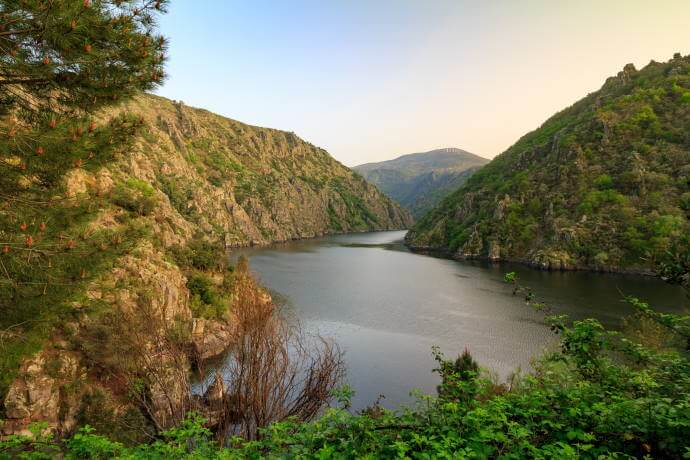
Located in Galicia and hidden inland, this wine region owes its name to the numerous medieval monasteries and churches it houses. The centuries-old vineyards, cultivated on the hilly cliffs, dominate the dramatic gorges and evergreen landscape, which is usually surrounded by a dense mist that gives it a mystical feel. The winemaking tradition in the Ribeira Sacra, an area crossed by the Miño and Sil rivers, dates back to Roman times! This region, which has been awarded the status of DO, produces more red than white wines. They are usually dry and made from the Mencia grape, which thrives in this climate. The main white grape variety, on the other hand, is Godello. If you visit the Ribera Sacra region, you will have the opportunity to learn all about "heroic viticulture" - since the slopes can be very steep, the work in the vineyard, which requires an almost "heroic" strength, can be quite hard (hence the name). While exploring the Ribera Sacra and its wineries and vineyards, you can also take the time to visit the many natural viewpoints and admire the fantastic views of the river. Monforte de Lemos is considered the capital of the region and has a rich historical heritage that you can explore, such as the palace and the old bridge. And did you know that there are several fairs dedicated to wine in this area? Try to catch one! Visit some wineries, do a wine tasting and learn all about wine making. A mix of nature, wine, delicious cuisine, history, art and even religion can be found in the Ribera Sacra, one of the best wine regions in Spain.
Rías Baixas
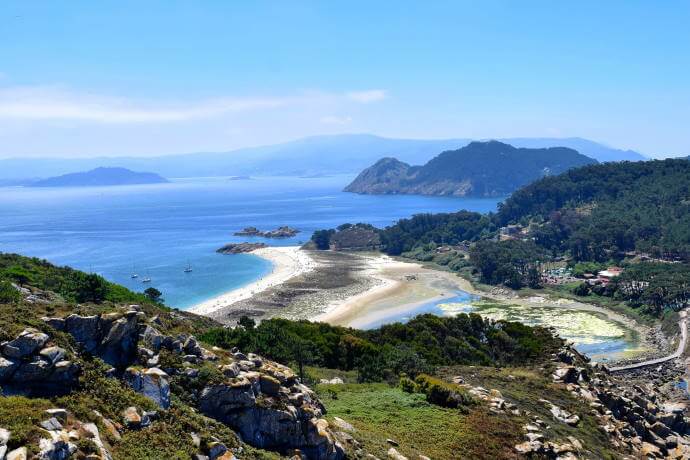
Probably Galicia’s most famous DO region, Rías Baixas (which translates literally to “low estuaries”) is internationally known for its crisp, fruity, aromatic and fragrant Albariño white wine, with saline notes. Located in the province of Pontevedra, close to the sea, this verdant wine region benefits from the maritime climate and the Atlantic influence. This influence, combined with the granite and slate soils, gives the wine its characteristic features: the natural acidity, minerality and citrus aromas. There are about 4,000 hectares of vineyards in Rías Baixas! As Galicia is known for its excellent fish and seafood dishes (it has an ancient maritime tradition), the exquisite white wines produced here are the perfect match to your local meal. In addition to the typical gastronomy and exquisite wines, you can also explore the rugged coastline, the paradisiacal sandy beaches with turquoise waters and the picturesque stone villages. Within the Rías Baixas region there are five subzones: Val do Salnés, Condado do Tea, O Rosal, Ribeira do Ulla and Soutomaior. Val do Salnés is the main growing area, but the climatic differences between these subzones guarantee a unique Albariño style in each area. There are thousands of small growers and producers throughout the wine region. Most of the wines produced here are whites, but there are also reds and sparkling wines from this region. Explore the small estuary towns and fantastic restaurants and bars, and be sure to take time to admire the mix of green and blue that characterizes this coastal area. Visit Cambados, the unofficial capital of Albariño country, and stroll through the quaint Praza de Fefiñáns, or simply take a walk along one of the many scenic trails this wine region has to offer!
Axarquía
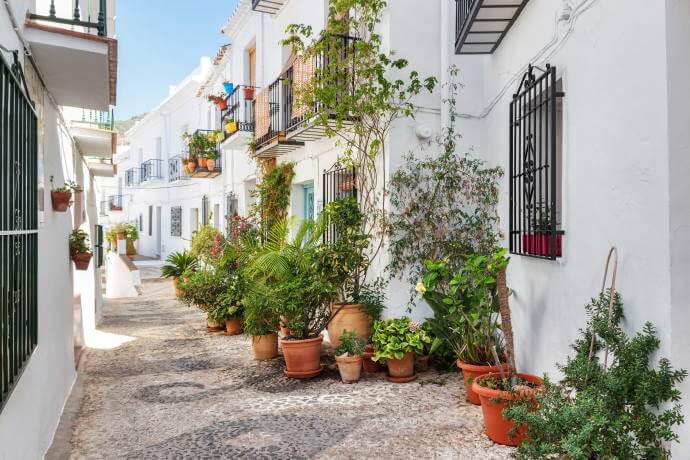
The Axarquía region is located in the eastern part of the province of Málaga, in Andalusia, and is characterised by astonishing landscapes, white villages, coastal resorts and, of course, unforgettable wines made from grapes grown in the mountains. In the Axarquía, Malaga's main wine-growing region, you will find numerous bodegas where you can learn more about this wine region and the grape harvest, and taste some of the local wines at your leisure. Most of the wines are white and sweet, but red wines are also produced here. Málaga is indeed an essential destination for wine lovers! In the Axarquía, you will be dazzled by the steep slopes and rugged terrain of the vineyards. The fact that the hills are very steep makes harvesting difficult and sometimes requires the use of traditional methods (such as animals), which are still used today. The Moscatel and Romé grape varieties (native grape varieties) are probably the best known in the region. The soils, the low rainfall and the good climate contribute to the high quality of these exquisite wines. And did you know that the grape harvest here is one of the earliest in Europe? During your visit to this wine region, take the time to stop by Nerja, where you will find the well-known Balcón de Europa with its breathtaking views and the Nerja Caves. In the Axarquía region there is also the so-called Ruta del Sol y del Vino (Sun and Wine Route), where you can visit the most important wine-growing towns such as Algarrobo, Sayalonga, Cómpeta, Canillas de Albaida, Torrox, Nerja and Frigiliana, and admire the most jaw-dropping landscapes with endless vineyards, mountains and sea.
Penedés
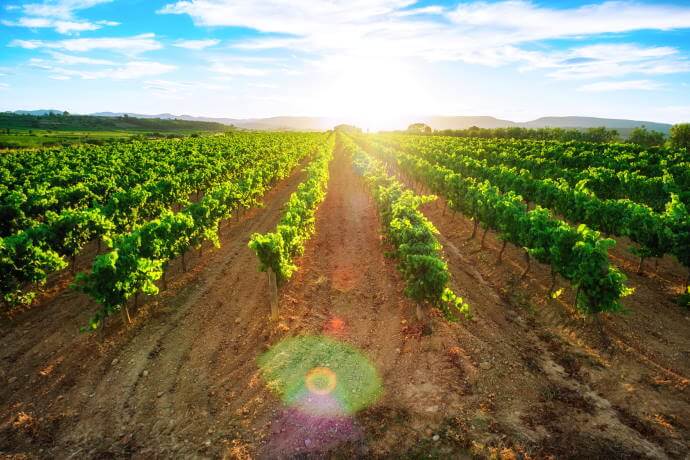
Penedès, a noteworthy wine-growing and demarcated area, is actually one of the oldest wine regions! Just a few kilometers from Barcelona, in the region of Catalonia, lies Penedès, famous for its sparkling wine Cava, made mainly from the white grape varieties Xarel-lo, Macabeo and Parrillada. Rich in art, culture, history and nature, this region is a Spanish Denominación de Origen Protegida (DOP) area and the most important wine-producing region in Catalonia. The DO status applies to dry, sweet and sparkling wines (red, white and rosé), with cava wines and white wines being the main reason for the region's popularity. This Mediterranean wine region is divided into three sub-regions: the Baix-Penedes (Lower Penedès) by the sea, the Garraf (also a coastal area but more centrally located) and the Alt-Penedes (High Penedès, the mountainous area inland), where most of the region's wine production takes place. The diversity of soils and climatic conditions ensure the quality of a wide variety of wines. In Penedès you can enjoy the warm climate and marvel at the landscape of the Montserrat Mountains while exploring the different wineries and tasting the delicate wines that are internationally known. You can also visit the VINSEUM: Museu de les Cultures del Vi de Catalunya in the charming historic town of Vilafranca del Penedès, home to the majestic Royal Palace and the Gothic Church of Santa Maria. In this region you can visit different wine cellars and learn more about the process of winemaking, from wine to bottle, or even join a cava wine tour. Penedès is the perfect combination of fine sandy beaches, fishing villages, forests and picturesque vineyards. Enjoy the peaceful, rural countryside with its quaint, charming villages!
Mallorca
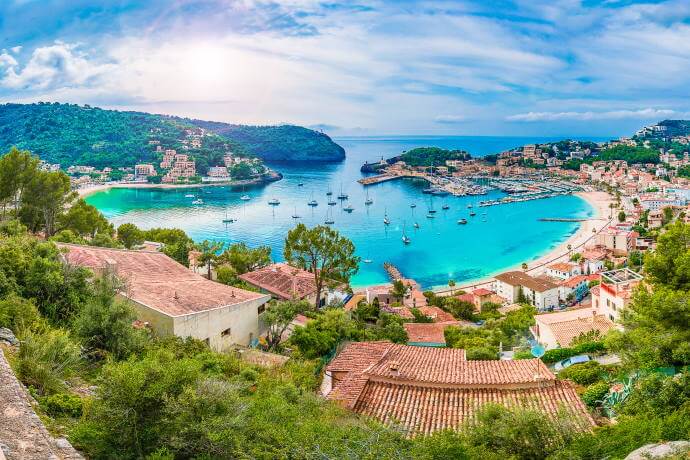
When you hear Mallorca, you automatically think of paradisiacal beaches, sapphire blue waters, natural backdrops and exciting nightlife, right? But what if we told you that Mallorca is actually a very famous wine-growing region? Besides being a great summer destination, Mallorca is also the perfect place for your relaxed wine-focused vacations! You can visit the small wineries and taste some of the best traditional wines, with the white wines being the most popular. Mallorca has also received the status of DO - the fertile soils and perfect microclimate create the ideal conditions for wine production. The two DO regions of the island are located in wine-growing areas: Binissalem, in higher altitude, and Pla I Llevant, that spreads over southern and eastern areas. The main grape variety grown here is the native Callet, although most of the wines produced today are a blend of native and international varieties. And did you know that Mallorcan wines are not usually exported? This means that the best way to taste some of these exquisite wines is to go directly to the source! You can actually lose sight of the region's endless vineyards and high-altitude mountain landscapes. Dozens of wineries are scattered all over the island! Discover the wine culture of this wonderful island, sip a glass of white wine in a seaside restaurant while enjoying a fish or seafood dish, and let the lively atmosphere of Mallorca take you away! Take the opportunity to also visit some of the charming villages of the island and the historical heritage of Palma.
Did you know that Portugal also follows Europe’s best wine tradition and has been growing steadily as a remarkable destination for wine lovers? Learn all about it!



